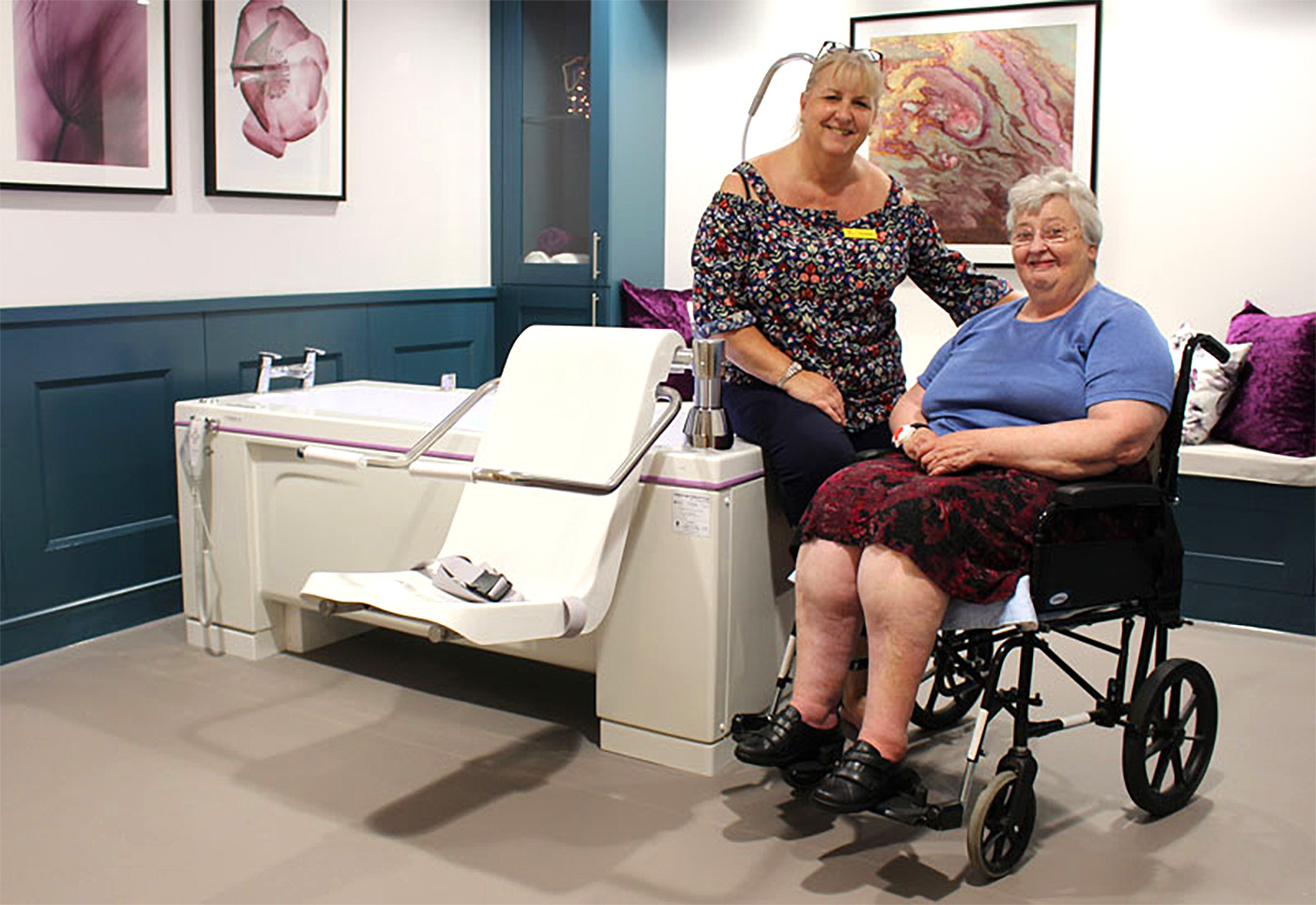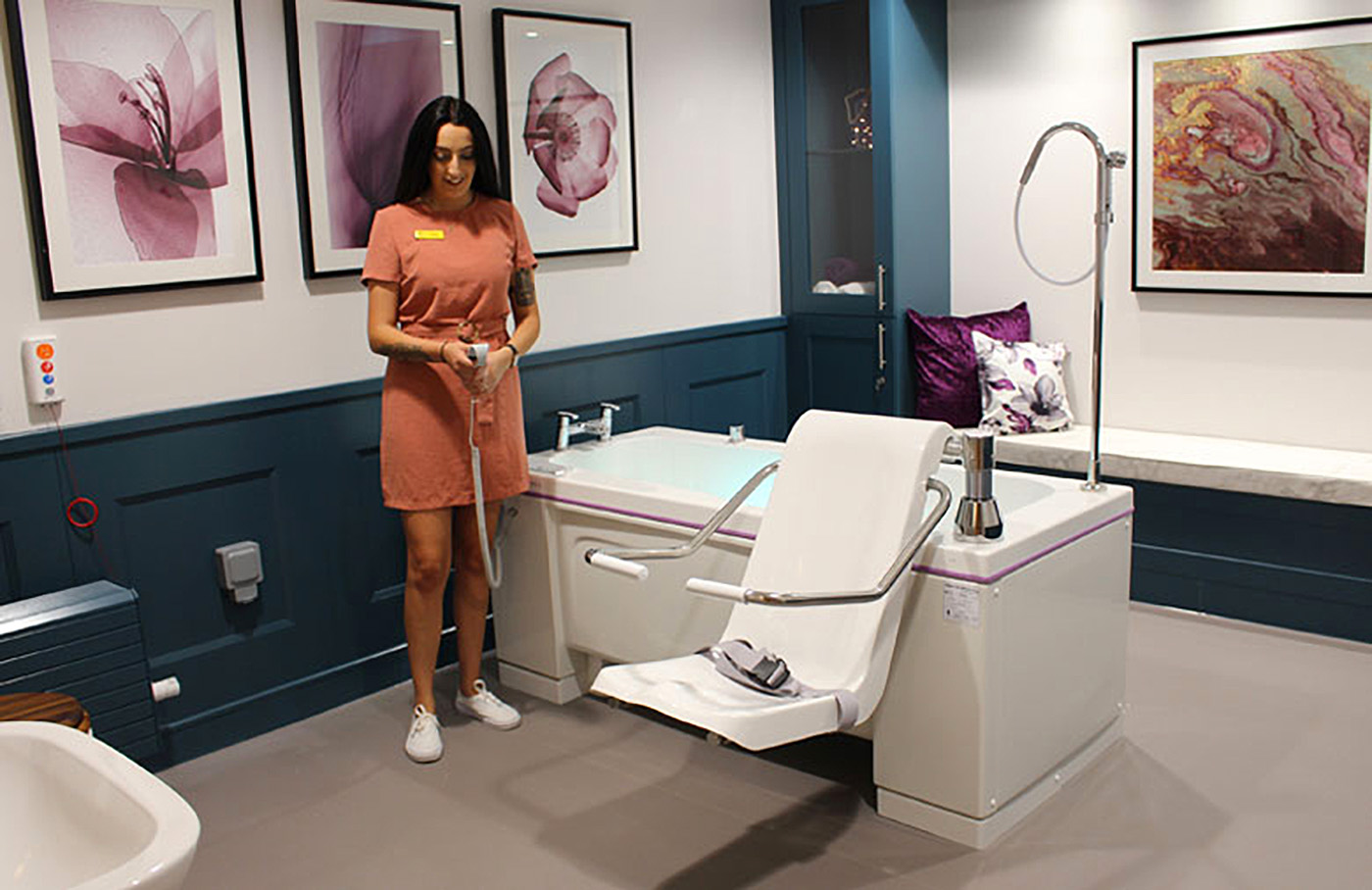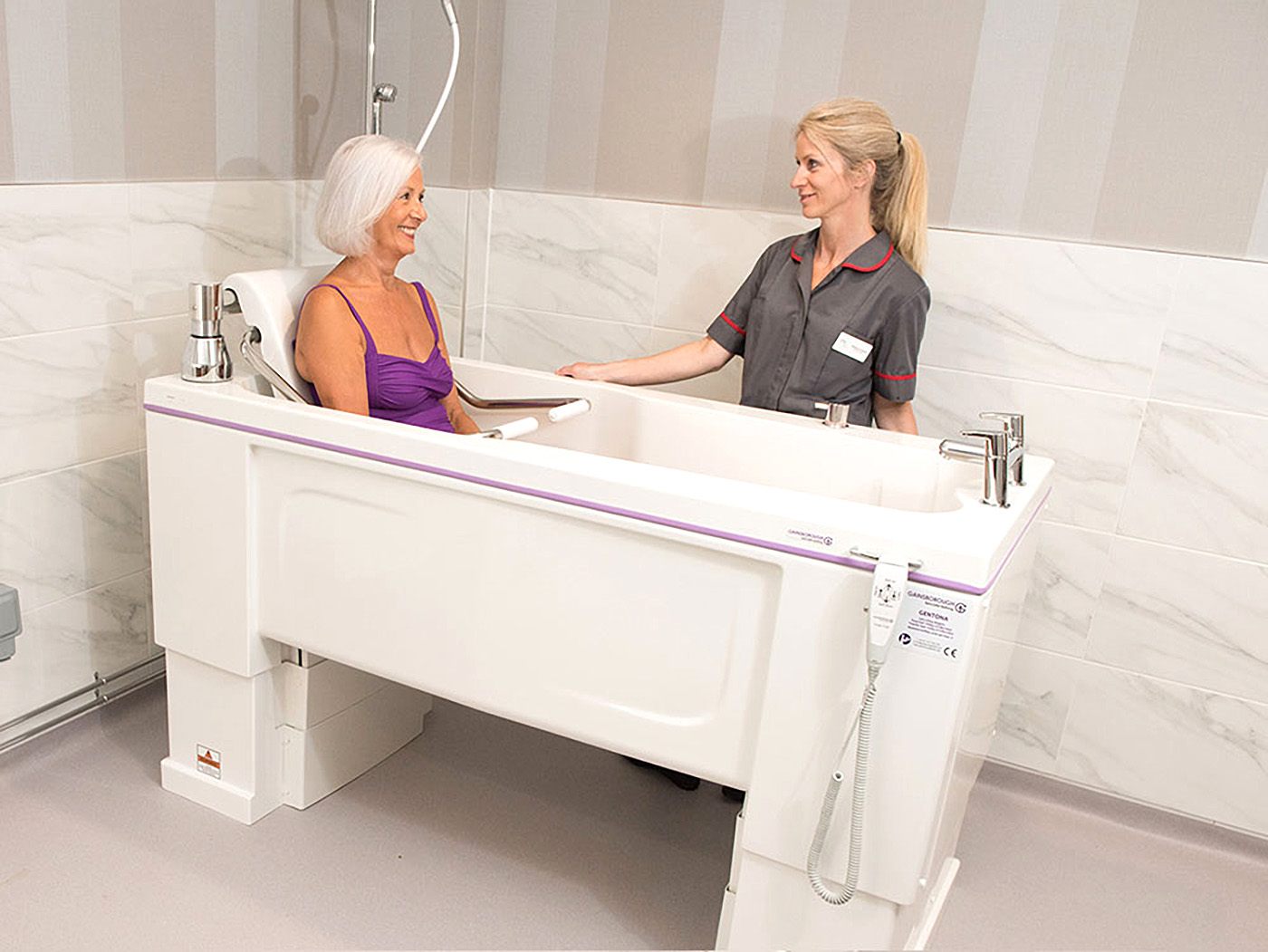Assisted bathroom safety
Preventing care home falls and enhancing resident safety with specialist bathroom solutions
)
Theresa Whitford, Care Home Manager, with the first resident to use the Gainsborough baths, Christine
An ageing UK population is now widely documented and conditions such as MS, Parkinson’s, arthritis, and dementia that lead to limitations in physical and cognitive functioning, mean many care home and hospital residents are at risk of falling.
It is estimated that care home residents are three times more likely to fall than people living at home. Additionally, the NHS state that: “Falls in hospitals are the most commonly reported patient safety incident with more than 235,000 falls reported in acute hospitals, community hospitals and mental health trusts in England annually”.
With a fall in a care home or hospital often preventing or delaying a patient’s return home, the impact can affect confidence and independence as well as physical and mental capabilities. This is turn can lead to increased frailty, falls and fractures. In fact, according to the NHS, falls are the most common cause of injury related deaths in people over the age of 75 and NICE estimates that each year, almost a third of over 65s fall at least once with an estimated 500,000 fragility fractures. CQC guidelines state that care providers must assess risks to health and safety during any care or treatment. A fall is typically due to an identifiable ‘risk factor’ – with the bathroom being one key area that care providers can tackle. Many older people prefer to utilise a bath for washing and relaxation yet often lack the ability to do so safely and independently.

Muscle weakness, reduced stability and eyesight changes play a part in higher risk of falls especially within badly designed and ill-equipped bathrooms. Slippery and uneven floor surfaces, toilets at the incorrect height, insufficient lighting, lack of safely secured handrails and ill-maintained transfer equipment such as wheelchairs and hoists, are just some of the risk factors.
To ensure fall reduction and enablement of safe moving and handling for dependent service users, care homes and acute care facilities are increasingly seeking to replace outdated and conventional bath and shower rooms with suitably adapted wet rooms and accessible bathing facilities.
Specialist service providers such as Gainsborough Specialist Bathrooms provide a proven range of assistive baths and specialist wet room equipment backed up with thorough care staff training and annual servicing packages. Through its G360 solution services, Gainsborough covers every minute detail of bathroom planning and implementation from specialist anti-slip flooring, lighting for dementia clients, antimicrobial tiling grout for reduced infection control through to specialist bather transfer chairs and hoists. The company also provides a high specification CGI visual design with greater realism and specification detail – so that all aspects of a new wet room or bathroom can be deemed accessible and safe for both bather and carer before any work commences.

Gainsborough believes it is of fundamental importance that the provision of suitable bathing facilities and specialist adaptations ensures safe and controlled moving and handling excellence and greatly reduces fall and injury risks. It recognises that increasing number of care facilities are adopting single-handed care procedures to effectively deal with staff recruitment challenges and budget efficiencies. Hence its user-friendly bathing solutions include powered and ergonomic assistive equipment, such as height-adjustable baths and powered bath seats which can be easily and safely accessed by service users in order to maximise independence, whilst room designs allow for ample wheelchair and hoist access and 360-degree bath access for carers.
In its ‘Care homes and equipment’ guide 2019, The Royal College of Occupational Therapists (RCOT) states: “ The right piece of equipment can make a life changing impact to a person’s life in a care home.” The prevention of falls and enablement of safe moving and handling capabilities in healthcare provisions, care homes and hospitals, can and should be supported by the provision of specialist equipment to enable risk reductions for both service users and carers. Only by specifying appropriate and specialist bathroom products from a proven manufacturer, can healthcare provider truly deliver a solution to the ever-evolving challenge of safe assisted bathing.
![Gainsborough Specialist Bathrooms [logo]](https://www.gainsboroughbaths.com/wp-content/themes/gainsborough-theme/assets/img/gsb-logo-white.svg)
